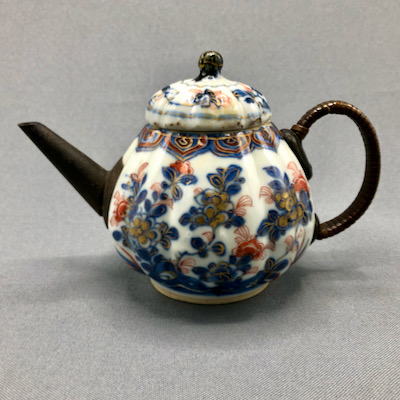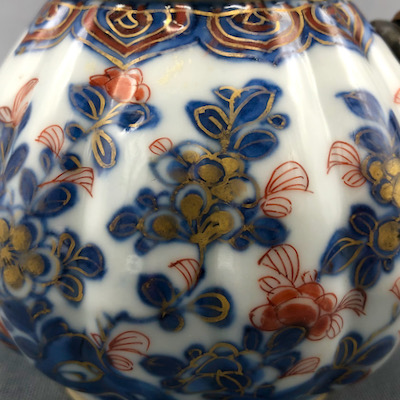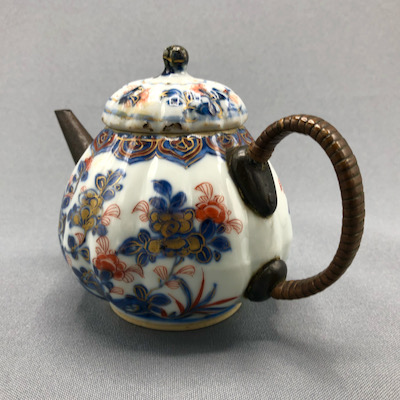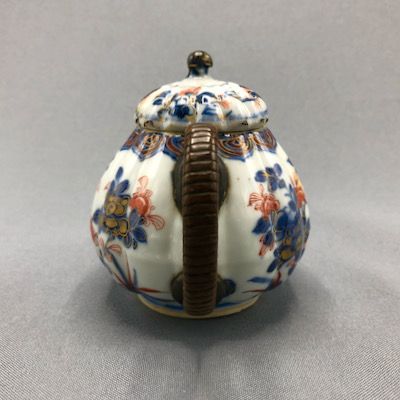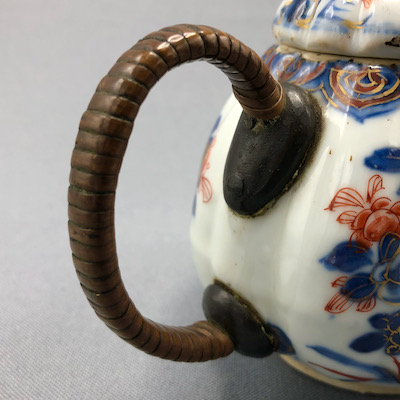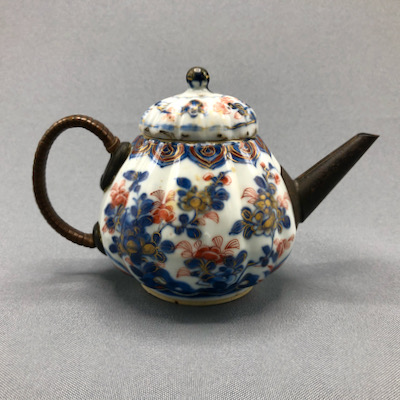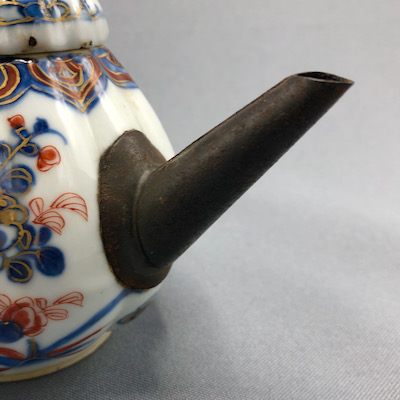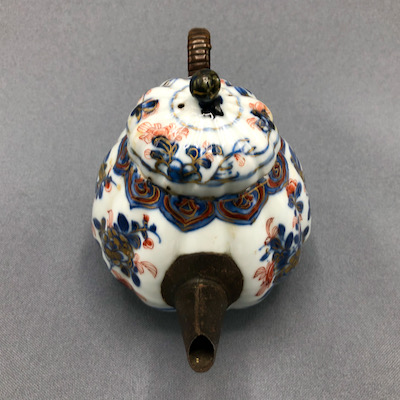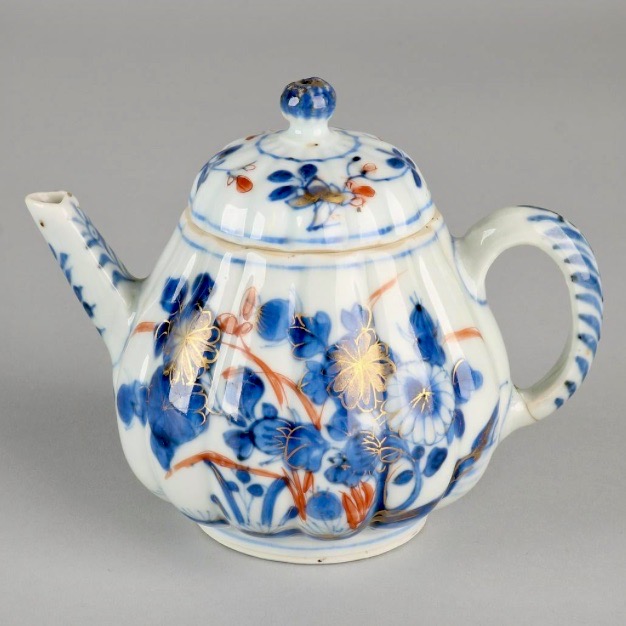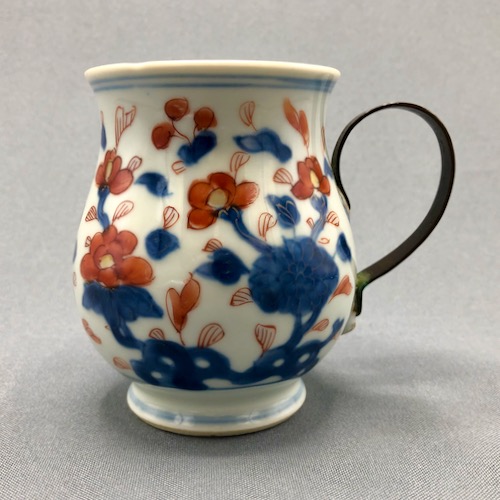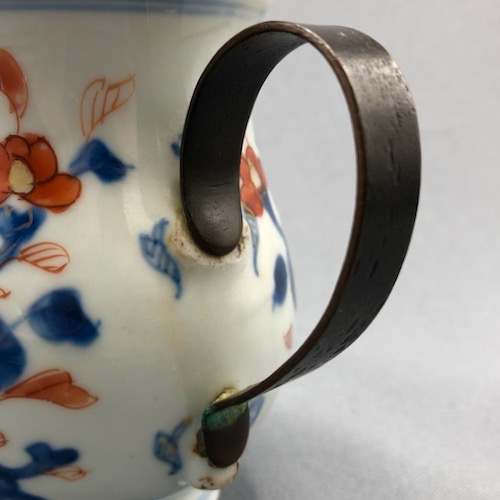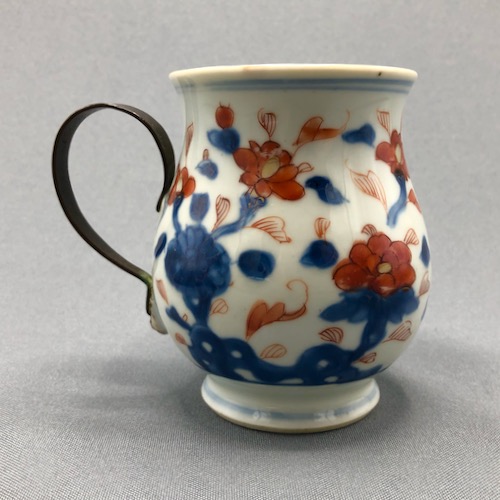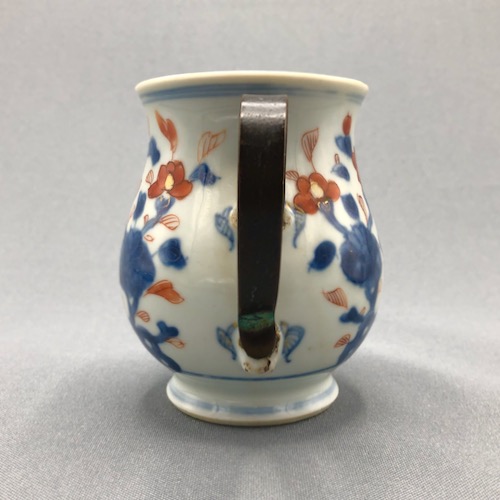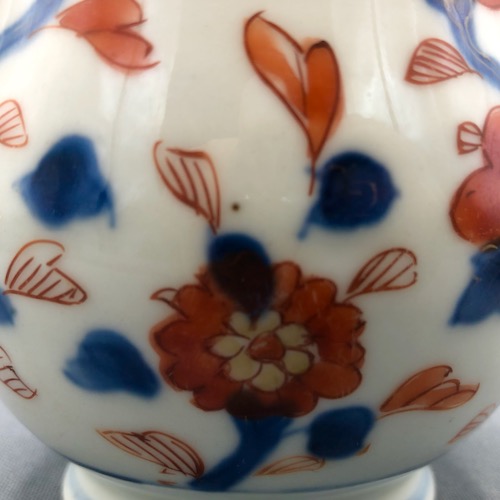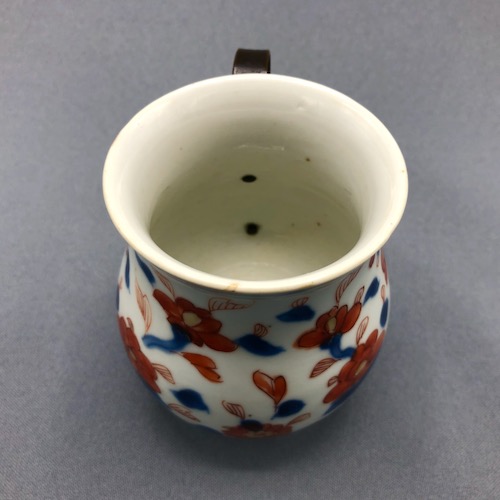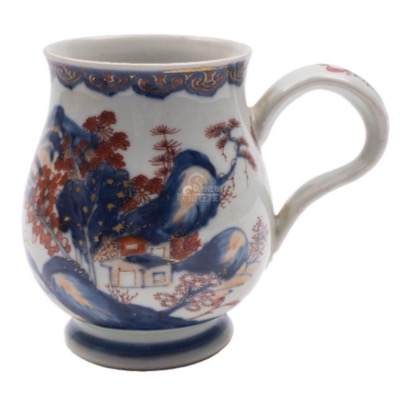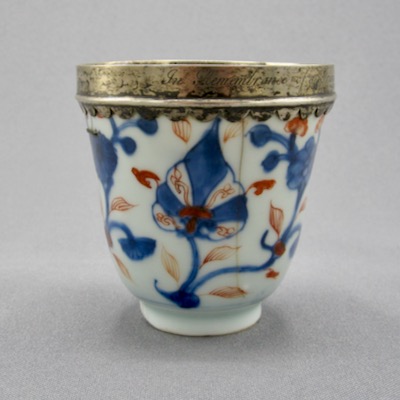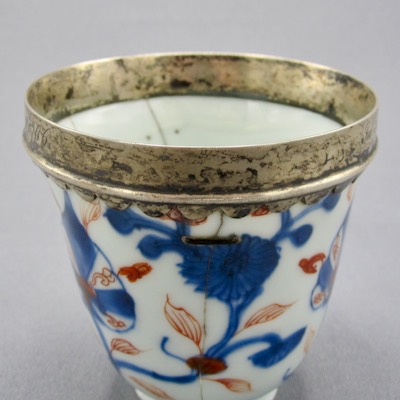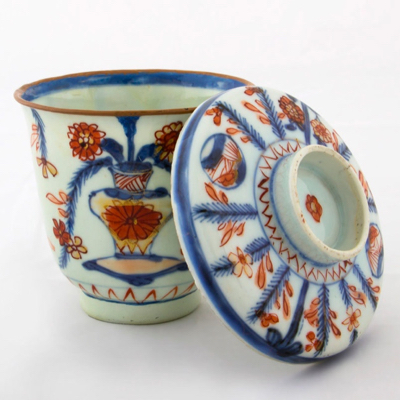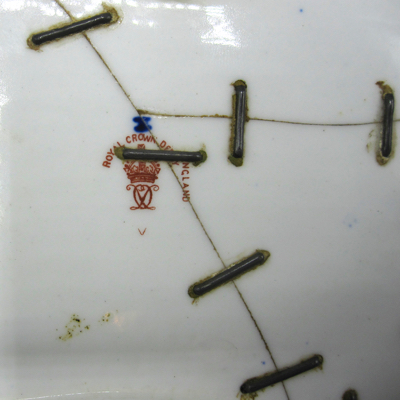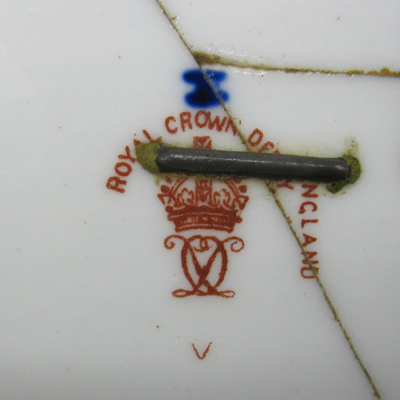Posts Tagged ‘Imari’
Sunday, March 4th, 2018
This porcelain plate was made in China during the Qianlong period (1736-95) and measures nearly 9 inches in diameter. It has a central motif of branches and flowers in the Japanese Imari palette of cobalt blue underglaze with red and gold overglaze washes. A fine plate, in my humble opinion, but not an extraordinary example by any means.
But…when the plate is turned over, the true beauty and the reason that I purchased it for my collection, is revealed. 34 small brass staples, seen only on the underside, clamp together the 8 broken pieces as tight as when the repair was done, over 200 years ago. Even though stapling, aka riveting, is the most common form of inventive repair, I still marvel at examples such as this. And naturally, I would proudly display it with the “wrong” side out.

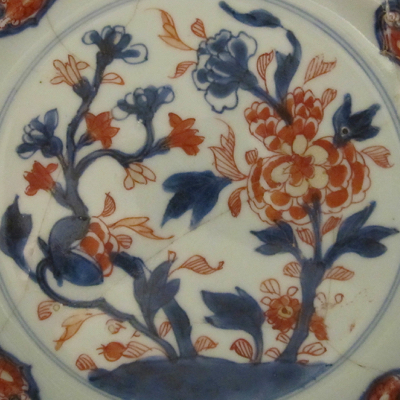





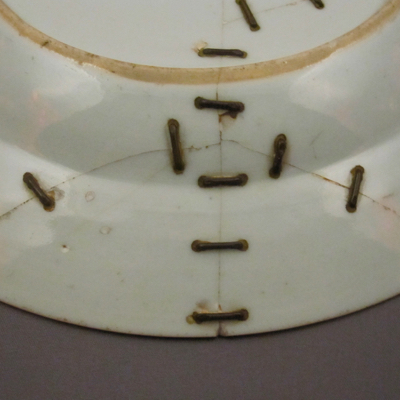
Tags:Chinese, Imari, porcelain, staples/rivets
Posted in plate/platter | 1 Comment »
Sunday, August 27th, 2017
This petite porcelain tea cup has floral decoration in the Imari palette, including cobalt blue, red, and gold. It was made in China during the Qianlong period (1736-95) and most likely would have been a part of a larger dinner service. It measures 2.5 inches high.
Well over 100 years ago, its original loop handle snapped off and was fitted with a nicely done, well proportioned metal replacement. I especially like the two-tone checkerboard pattern of the woven rattan, which might have been the calling card of the repairer. I have dozens of examples of wrapped metal handles and I like comparing the various styles and patterns of the rattan.
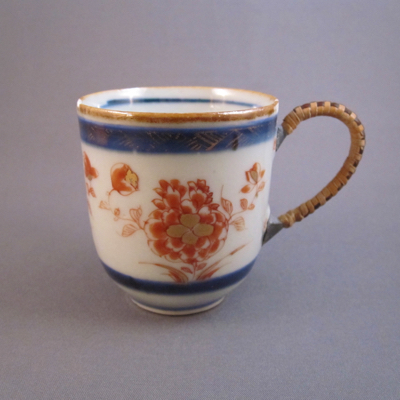
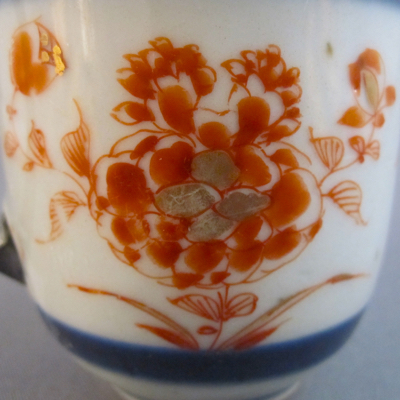
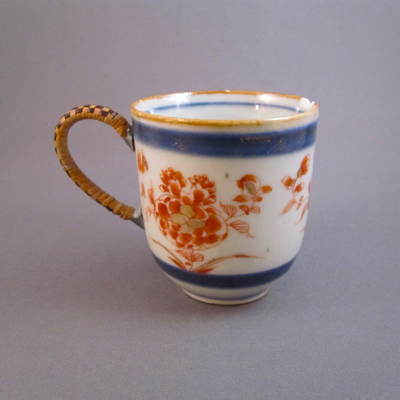
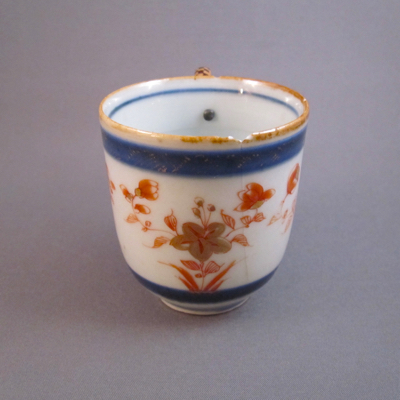
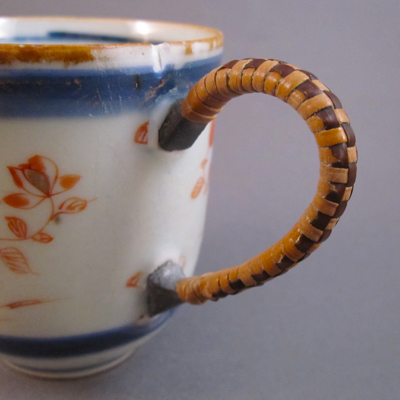
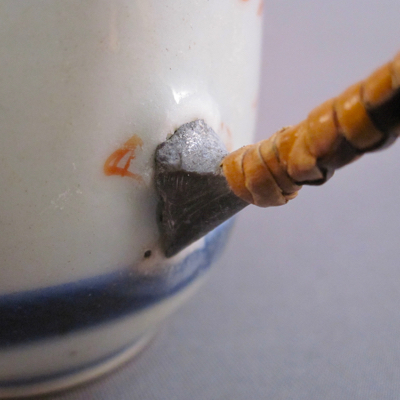
This cup with similar form and decoration suggests what the original handle on my cup would have looked like.

Photo courtesy of Stockspring Antiques
Tags:Chinese, Imari, metal handle, rattan
Posted in cup/saucer | No Comments »
Sunday, May 21st, 2017
This bullet-form porcelain teapot has it all: good looks, great form, a winning personality, and two different early inventive repairs. It was made in China for export during the Kangxi period (1662-1722) and is decorated with floral sprays in the Japanese Imari palette with bold colors and strong graphics. It measures 4 inches high and 6.5 inches wide from handle to spout.
At some point in its early life, a spoutless teapot was brought to a repairer who made a simple metal replacement spout. Not long after, it was brought back to be fitted for a wicker covered bronze replacement handle. A friend once showed me a similarly shaped teapot that had met such an end. And by merely sealing up the hole left by the missing spout and grinding down the handle terminals, the original owner lost a teapot but gained a sugar bowl. As much as I marvel at the ingenuity of that transformation, I am glad my broken teapot is still a teapot.
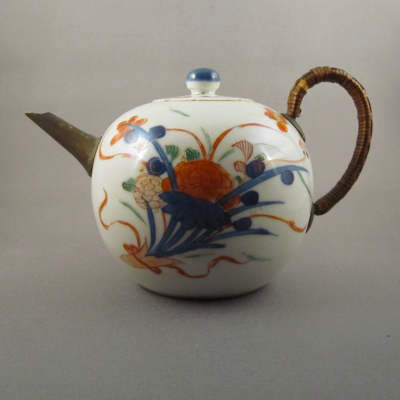
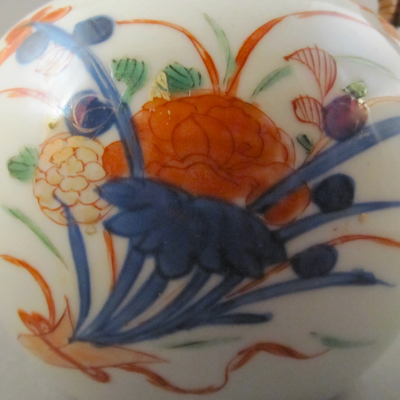



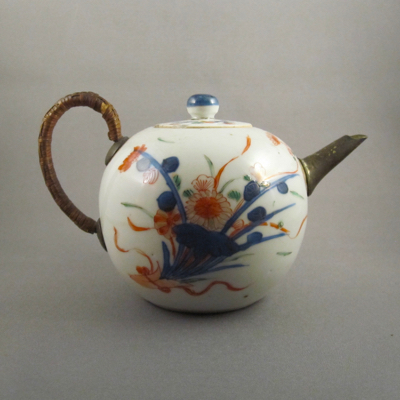
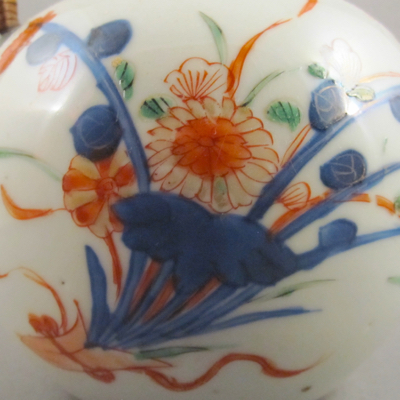
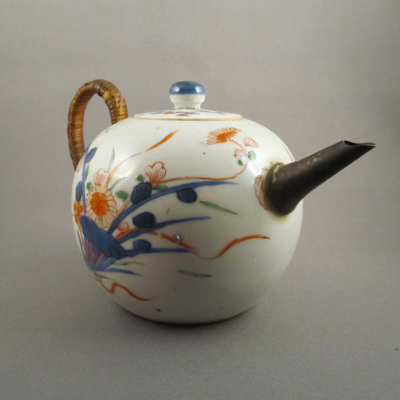
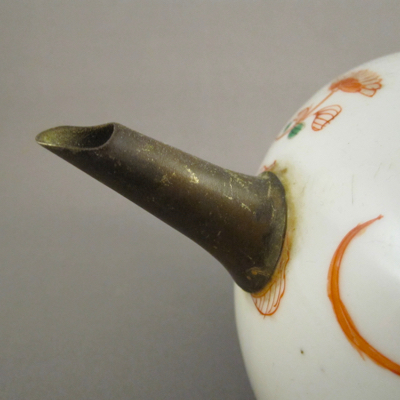
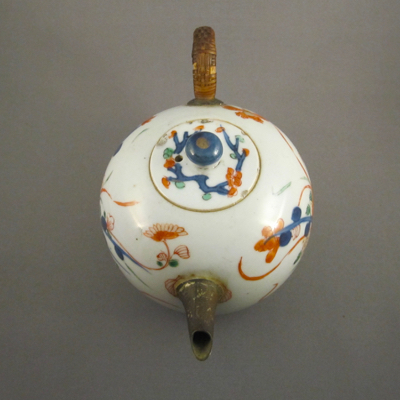
This teapot with similar form and decoration shows what the original handle and spout might have looked like on mine.
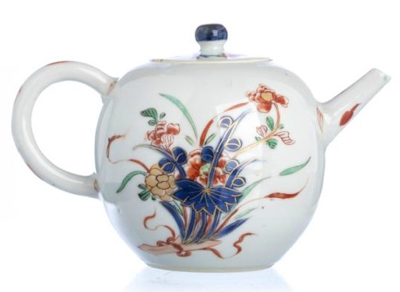
Photo courtesy of Alain Truong
Tags:Chinese, globular, Imari, metal handle, metal spout, porcelain, rattan
Posted in teapot | No Comments »
Saturday, September 10th, 2016
This octagonal shaped jug with a snake form handle was made in Staffordshire, England, in the early 1800s. It is decorated with a cobalt blue geometric border, chrysanthemums, and leaves, with red and green overpainting and gilt highlights. On the underside is the stamp “DAVENPORT STONE CHINA,” which dates this jug to 1805-1820. It stands 7 inches high and is 6.5 inches wide from lip to handle.
It appears that well over 100 years ago this jug had a great fall, but unlike Humpty Dumpty, it WAS put back together again. A “china mender” used 27 metal staples to secure the cracks, adding an unintentional secondary pattern to the already busy design. For extra precaution, red wax was applied to the cracks on the inside, as a deterrent against possible leakage.
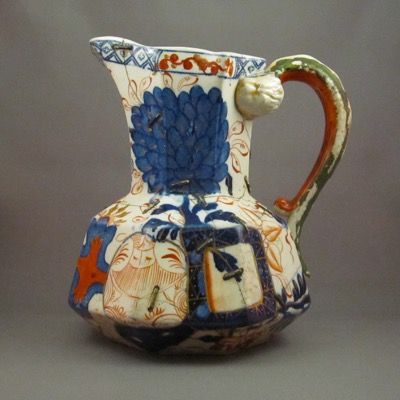
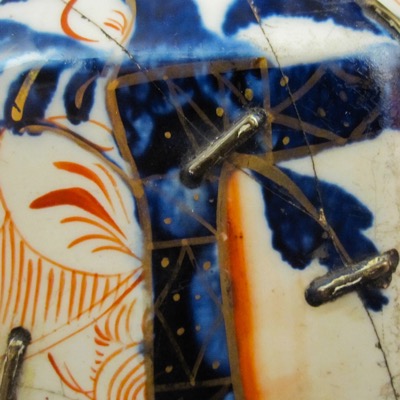
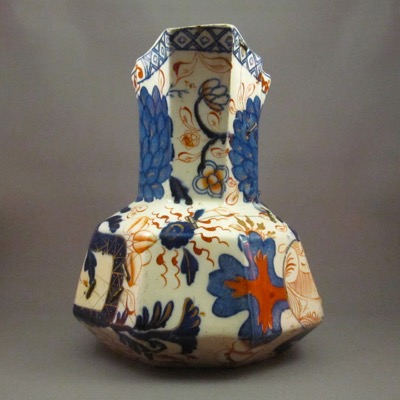


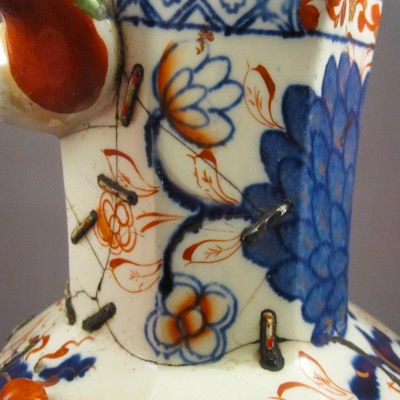


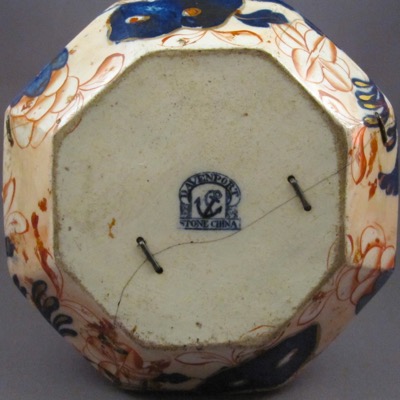
Tags:English, Imari, pottery, staples/rivets
Posted in jug | 1 Comment »
Friday, November 28th, 2014
This porcelain helmut-shaped cream jug, decorated in the Imari palette of blue, iron red and gilt, stands 4-1/4″ tall. It was made in China during the Qianlong period (1736-1795.) The hand painted decoration of floral sprigs and alternating blue panels suggests it was made for export to the Persian market.
At one point in its early life, the original porcelain handle snapped off, leaving it impossible to gracefully pass the cream at the dining table. It was brought to a tinker or metalsmith who fashioned this ornate replacement handle, possibly repurposed from an existing silver item. The delicate silver replacement is more ornate than the original branch-form handle, but adds just the right touch of class and whimsy.
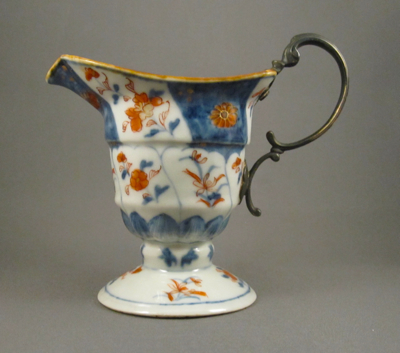
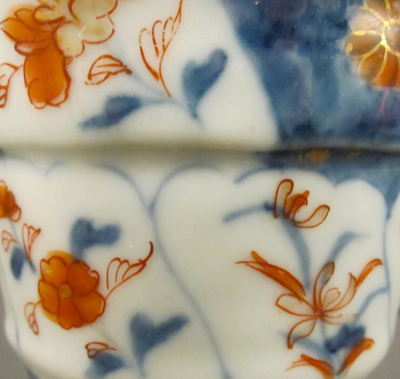
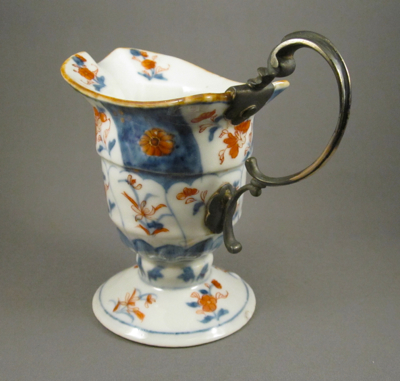
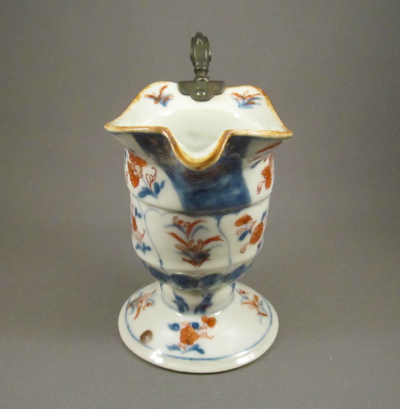
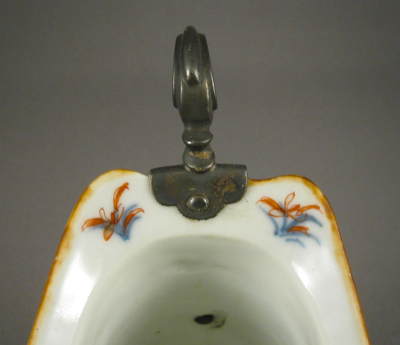
The center jug, with similar form and decoration, shows what the original handle on my jug might have looked like.
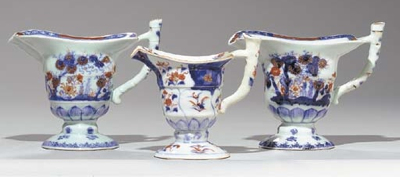
Photo courtesy of Christie’s
Tags:Chinese, Imari, metal handle, porcelain, Qianlong
Posted in jug | 3 Comments »
Saturday, May 17th, 2014
This minute bone china porcelain cup & saucer duo, made at the turn of the 20th century at the Coalport factory in Shropshire, England, has some of the smallest metal staple repairs I have ever seen. It has printed Japanese style floral decoration in the Japanese Imari palette, consisting of iron red, cobalt blue and gilt enamels. Both pieces are marked with a green stamp on the underside, dating them to 1890-1920. The saucer measures 3-1/4″ in diameter and the cup stands nearly 1-1/2″ high with an opening of 2″.
After the dainty saucer fell to the floor, breaking into six small fragments, it was brought to a china mender who pieced the puzzle back together. Using 10 custom made metal staples, the smallest being a mere 1/4″ long, the saucer was once again able to function as a support to the tiny cup it carried. Imagine the nimble fingers capable of creating such fine work!

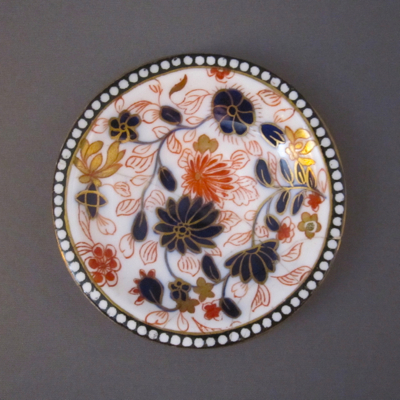
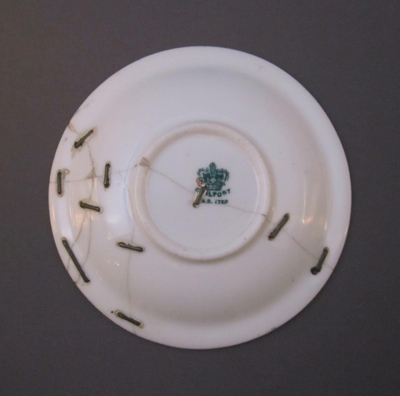
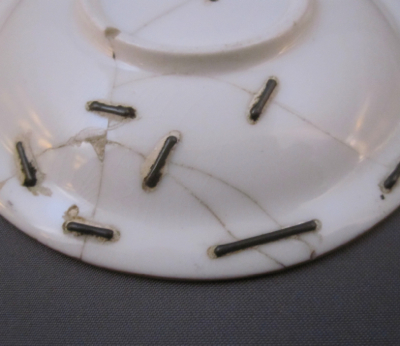
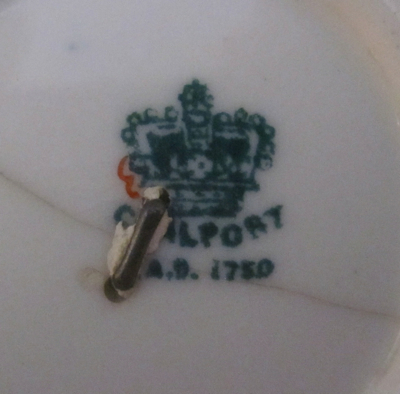
Tags:English, Imari, miniature, porcelain, staples/rivets
Posted in cup/saucer, saucer | No Comments »
